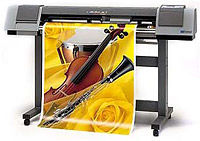Transforming Imagination Into Reality
The Roland legend began with a single individual’s vision of unleashing the potential of electronics for musical expression.

Ikutaro Kakehashi, Roland Founder
The Early Years
Ikutaro Kakehashi, Roland founder, started out in timepieces. The success of his watch repair business led Kakehashi to explore electronics. He was running an electrical appliance business in the 1950s when the thrill of hearing an early electronic organ at church began a lifetime journey that would result in a revolution not only in music, but the graphic arts and product design. When he was 28, he decided that making musical instruments would become his life’s work.
Ace Electronics
In 1960, he formed Ace Electronic Industries to explore the budding electronic musical instruments industry. The application of transistors to electronic organs led to the development of the Rhythm Ace R-1, the world’s first transistorized, non-automatic, percussion instrument. An automatic version, the Rhythm Ace FR-1, followed and was adopted by the Hammond Organ Company. In addition to designing guitar amplifiers, effects units and rhythm machines, Ace was responsible for developing several combo organs.
The Roland Name
In 1972, Roland Corporation was formed. In selecting the name, Kakehashi researched names consisting of two soft syllables that could be recognized and pronounced throughout the world. “R” was chosen because of the lack of competitive names beginning with that letter. Only later did he discover the Song of Roland, the 11th century French poem, with its message of strength and courage.
From the beginning, the direction set for Roland by Kakehashi was to be an innovator, discovering and developing products that opened new avenues of creative expression. Success followed with the introduction of Roland keyboards and organs, guitar amplifiers and Boss guitar effect pedals.
Revolutionizing the Music Industry
In 1981, Kakehashi proposed the development of a communications standard for all electronic music devices. This resulted in the adoption in 1982 of the Musical Instrument Digital Interface or MIDI which would transform the music industry.
In 1982, Kakehashi established a new division called AMDEK for Analogue Music Digital Electronics Kits. In 1983, this division was renamed Roland DG (Digital Group) Corporation with a focus on manufacturing the company’s own computer and musical peripherals. Introduced in 1982, the DXY 100R plotter offered a major breakthrough in price and performance for engineering professionals. It would lead to the first A-3 size pen plotter, the DXY-800 in 1983.

Roland introduced the world’s first all-in-one, high-quality inkjet color printer and precision contour cutter, the CAMMJET CJ-60, in 1996.
Beyond Music
The worldwide need for plotters capable of printing architectural drawings and cutting vinyl signs was about to explode. As the precision and reliability of Roland engineering transferred from digital musical instruments and peripherals to XY-axis technologies, a revolution in plotters, vinyl cutters, inkjet printers and integrated printer/cutters took place. Within a few short years, Roland had revolutionized the CAD, signmaking and fine art industries.
The addition of the third Z-axis was a natural extension. The CAMM-3 series of modeling machines was introduced in 1986 with the PNC-3000, offering an entry level, desktop prototyping device.
Roland Today
Today, Roland continues to focus on our founder’s vision of using digital technology to transform imagination into reality. Professionals worldwide rely on Roland solutions everyday in the sign, grand-format, sublimation, UV inkjet, digital graphics, vehicle graphics, fine art, photography, flexo, label, engraving and 3D modeling industries. The company serves its customers with both an award-winning product line and a service and support network that is second to none. As a company, Roland is committed to global conservation efforts and employs environmentally sound manufacturing and business practices.





